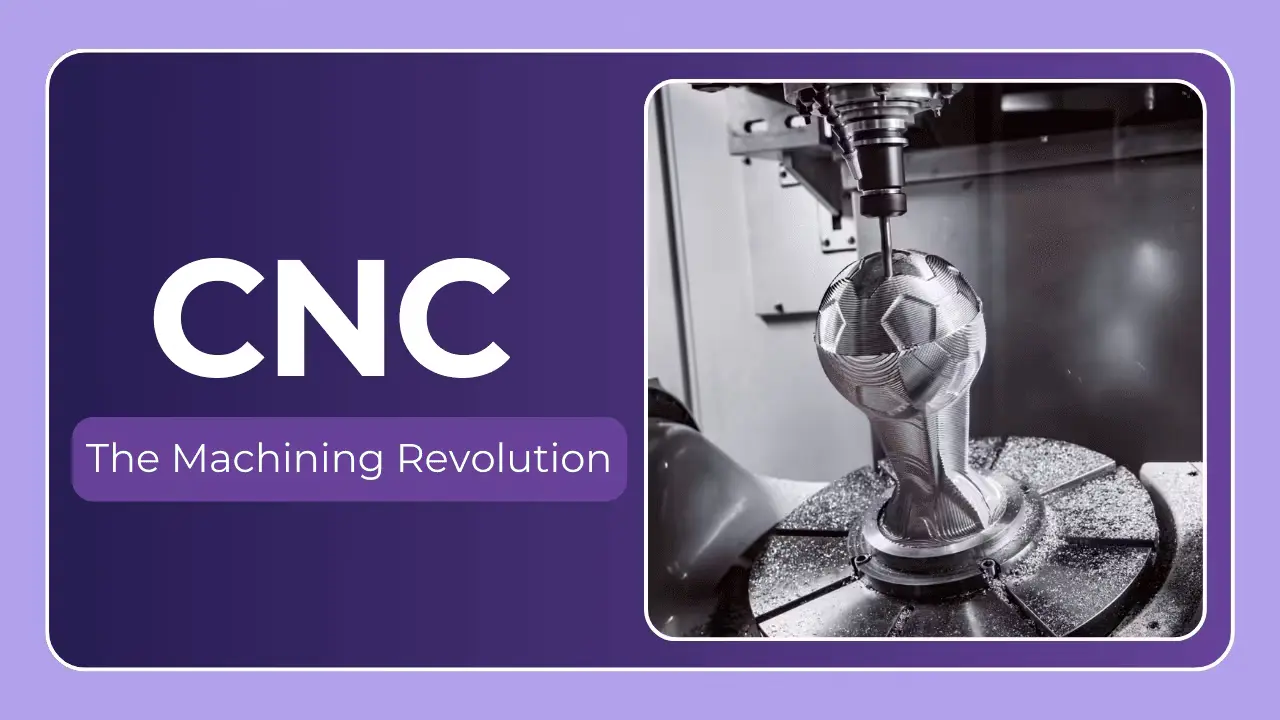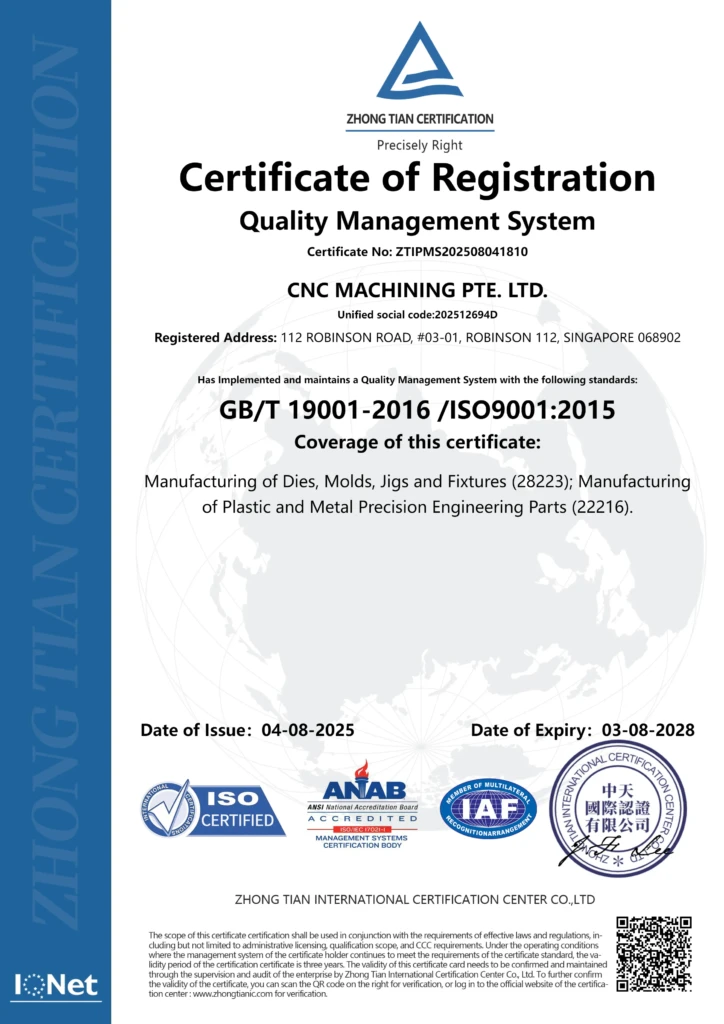CNC Machining Parts Guide: Your Comprehensive Guide to Precision Parts
In today’s manufacturing landscape, precision and efficiency are paramount. CNC (Computer Numerical Control) machining has emerged as a critical process for creating intricate and high-quality parts across diverse industries, from aerospace and automotive to medical devices and electronics. This guide provides a comprehensive overview of CNC Machining Parts Guide, covering its fundamental principles, processes, materials, design considerations, and the advantages of choosing a reliable partner like CNC MACHINING PTE. LTD.
What is CNC Machining?
At its core, CNC machining uses computer-controlled machine tools to precisely remove material from a workpiece, shaping it into the desired form. Unlike traditional machining, which relies heavily on manual operation and operator skill, CNC machining leverages pre-programmed instructions to automate the cutting process. These instructions are based on a CAD (Computer-Aided Design) model of the part, ensuring accuracy and repeatability.
The CNC Machining Process: A Step-by-Step Overview
The CNC machining process generally involves the following key steps:
-
- Design and CAD Modeling: The process begins with creating a detailed 3D model of the part using CAD software. This model defines the exact dimensions, features, and tolerances required. Selecting the correct CAD software depends heavily upon the required function and complexity of the design.
-
- CAM Programming: The CAD model is then imported into CAM (Computer-Aided Manufacturing) software. The CAM software translates the CAD design into machine-readable code (G-code or M-code) that instructs the CNC machine on how to execute the cutting operations. This stage involves defining toolpaths, cutting parameters (speed, feed rate, depth of cut), and other essential parameters.
-
- Machine Setup: Before machining can begin, the CNC machine must be properly set up. This includes selecting and mounting the appropriate cutting tools, securing the workpiece in the machine, and verifying the alignment and calibration of the machine. Tool selection is also important to consider surface finish and material selection between tool and work piece.
-
- Machining Operation: Once the machine is set up, the CNC program is loaded into the machine’s controller. The machine then executes the program, automatically moving the cutting tool along the programmed toolpaths to remove material from the workpiece. Different machining processes, such as milling, turning, drilling, and grinding, can be employed depending on the specific features and requirements of the part.
-
- Inspection and Quality Control: After the machining operation is complete, the part is thoroughly inspected to ensure that it meets the specified dimensions, tolerances, and surface finish requirements. This may involve using precision measuring instruments such as calipers, micrometers, coordinate measuring machines (CMMs), and optical comparators.
Common CNC Machining Processes
Several distinct CNC machining processes are commonly used, each suited to different types of operations and part geometries:
-
- CNC Milling: Milling is a subtractive manufacturing process that uses rotating cutting tools to remove material from a workpiece. CNC milling machines can perform a wide range of operations, including:
-
- Face Milling: Creating flat surfaces on the workpiece.
-
- End Milling: Cutting contours, slots, and pockets.
-
- Drilling: Creating holes of specific diameters.
-
- Tapping: Creating internal threads in holes.
Five-axis CNC milling, as offered by CNC MACHINING PTE. LTD, provides even greater versatility and allows for the machining of complex geometries with multiple angles and curves in a single setup. This reduces the need for multiple setups, improving accuracy and efficiency.
-
- CNC Milling: Milling is a subtractive manufacturing process that uses rotating cutting tools to remove material from a workpiece. CNC milling machines can perform a wide range of operations, including:
-
- CNC Turning: Turning, also known as lathing, is a machining process that rotates a workpiece while a cutting tool is fed along its surface to remove material. CNC turning machines are ideal for creating cylindrical parts with features such as:
-
- Turning: Reducing the diameter of a workpiece.
-
- Facing: Creating flat surfaces perpendicular to the axis of rotation.
-
- Boring: Enlarging existing holes.
-
- Threading: Creating external threads on cylindrical surfaces.
-
- CNC Turning: Turning, also known as lathing, is a machining process that rotates a workpiece while a cutting tool is fed along its surface to remove material. CNC turning machines are ideal for creating cylindrical parts with features such as:
-
- CNC Drilling: Drilling is a machining process used to create holes in a workpiece using a rotating drill bit. CNC drilling machines can precisely control the location, depth, and diameter of the holes. Variations include:
-
- Spot Drilling: To create a precise starting location.
-
- CNC Drilling: Drilling is a machining process used to create holes in a workpiece using a rotating drill bit. CNC drilling machines can precisely control the location, depth, and diameter of the holes. Variations include:
-
- CNC Grinding: Grinding is a machining process that uses an abrasive wheel to remove material from a workpiece. CNC grinding machines are used to achieve very high precision and surface finish.
Materials Used in CNC Machining
CNC machining can be used with a wide range of materials, including:
-
- Metals: Aluminum, stainless steel, carbon steel, titanium, brass, copper, and alloys. Each offers different properties in strength, corrosion resistance, and machinability.
-
- Plastics: ABS, polycarbonate, nylon, acrylic, PEEK, and other engineering plastics. Plastics offer varying levels of strength, flexibility, and chemical resistance.
-
- Composites: Carbon fiber, fiberglass, and reinforced polymers.
Selecting the appropriate material is crucial for ensuring that the final part meets the required performance characteristics. CNC MACHINING PTE. LTD. offers expertise in working with a wide variety of materials, helping customers choose the optimal material for their specific application.
Design Considerations for CNC Machining
When designing parts for CNC machining, it is essential to consider the following factors:
-
- Geometry: Avoid excessively sharp internal corners, as these can be difficult to machine. Use fillets and radii to improve machinability and reduce stress concentrations.
-
- Tolerances: Specify tolerances that are achievable with CNC machining. Tighter tolerances may increase manufacturing costs.
-
- Material Selection: Choose a material that is suitable for the intended application and can be readily machined.
-
- Features: Design features that can be easily accessed by the cutting tools. Avoid deep, narrow pockets or complex internal geometries that may require specialized tooling.
-
- Part Orientation: Consider how the part will be oriented during machining. Optimizing part orientation can reduce the number of setups required and improve accuracy.
-
- Wall Thickness: Maintain sufficient wall thickness to prevent warping or distortion during machining.
-
- Draft Angles: Incorporate draft angles on side walls to aid in mold release if the part is intended for molding after processing.
Benefits of Choosing CNC MACHINING PTE. LTD.
CNC MACHINING PTE. LTD. stands out as a reliable partner for CNC machining needs, offering several key advantages:
-
- Advanced Equipment: Equipped with state-of-the-art five-axis CNC machining equipment, enabling the creation of complex and intricate parts with high precision.
-
- Expertise and Experience: Possesses a team of highly skilled engineers and machinists with extensive experience in CNC machining, particularly with metal parts manufacturing.
-
- Comprehensive Services: Offers a complete range of services, from design assistance and material selection to CNC machining, post-processing, and finishing.
-
- Material Versatility: Can work with a wide variety of materials, including metals, plastics, and composites, providing flexibility for diverse applications.
-
- Rapid Prototyping and Production: Can quickly produce prototypes and production parts, enabling customers to bring their products to market faster.
-
- One-Stop Solution: Provides a convenient and efficient one-stop solution for all CNC machining needs, simplifying the supply chain and reducing lead times.
-
- Post-Processing and Finishing: CNC MACHINING PTE. LTD. is not just limited to machining; they offer comprehensive post-processing and finishing services, ensuring that your parts are delivered ready for use. These services can include:
-
- Anodizing: Enhancing corrosion resistance and providing a decorative finish on aluminum parts.
-
- Powder Coating: Providing a durable and attractive finish on metal parts.
-
- Heat Treatment: Altering the mechanical properties of metal parts.
-
- Passivation: Enhancing the corrosion resistance of stainless steel parts.
-
- Bead Blasting: Creating a uniform matte finish on metal parts.
-
- Polishing: Achieving a smooth and reflective surface finish.
-
- Post-Processing and Finishing: CNC MACHINING PTE. LTD. is not just limited to machining; they offer comprehensive post-processing and finishing services, ensuring that your parts are delivered ready for use. These services can include:
Conclusion
CNC machining is a powerful and versatile technology that plays a vital role in modern manufacturing. By understanding the principles, processes, materials, and design considerations discussed in this guide, you can leverage CNC machining to create high-quality, precision parts for a wide range of applications. Choosing a partner like CNC MACHINING PTE. LTD., with its advanced equipment, expertise, and comprehensive services, can help ensure the success of your projects. For your custom precision machining needs, CNC MACHINING PTE. LTD. offers tailored solutions at competitive prices – making them a prime choice for precision part manufacturing. Contact them today to experience the difference!




